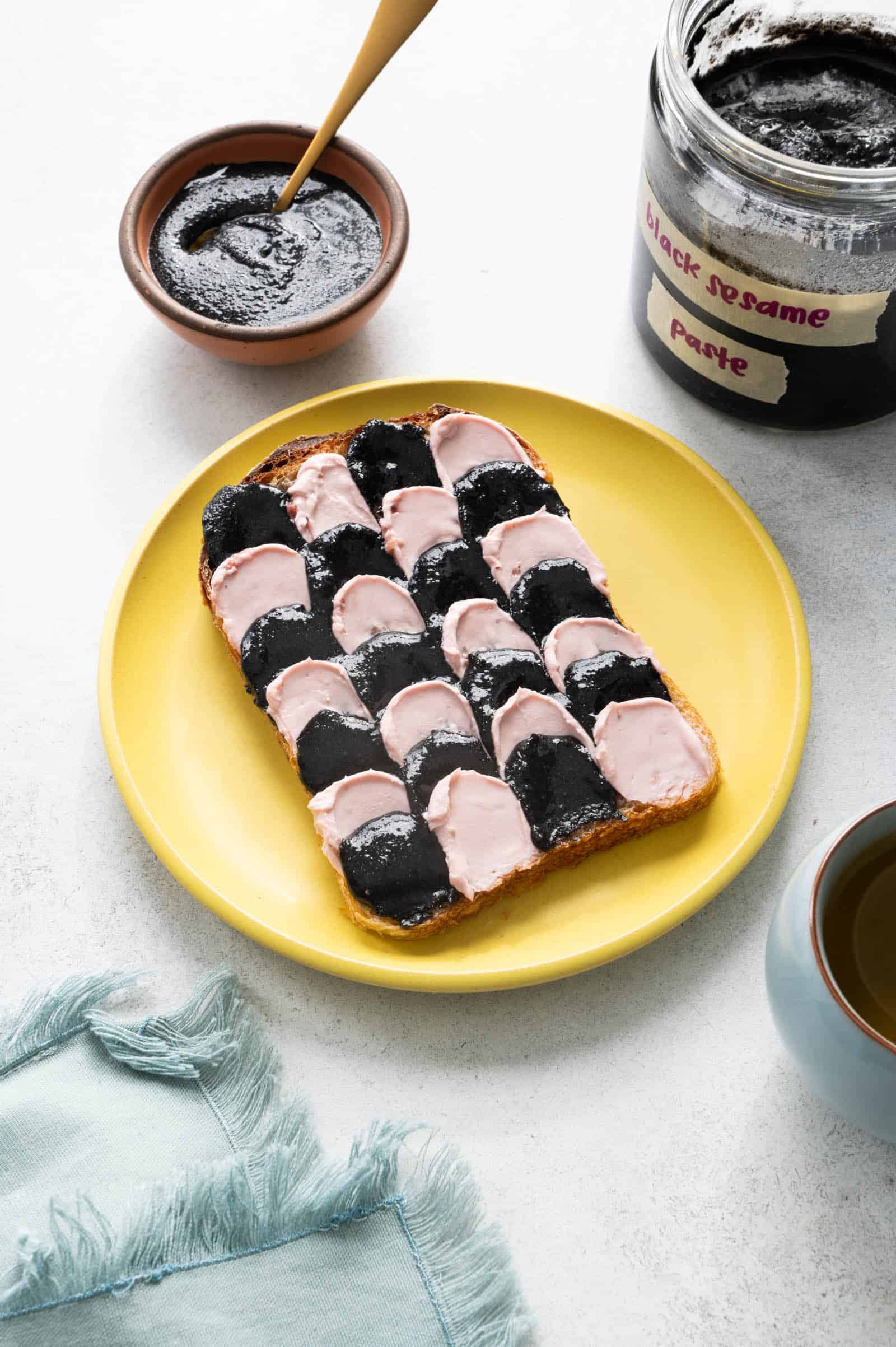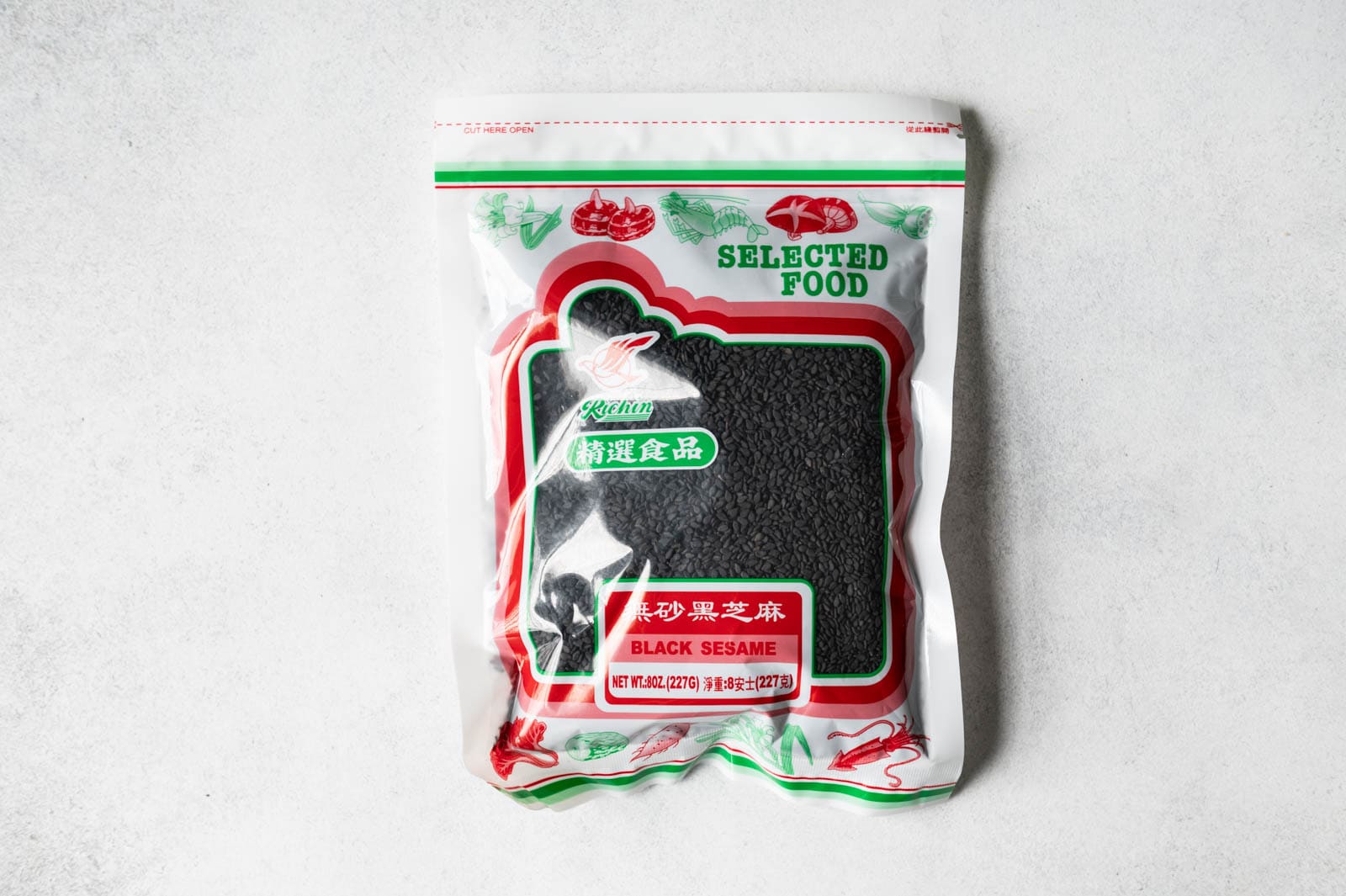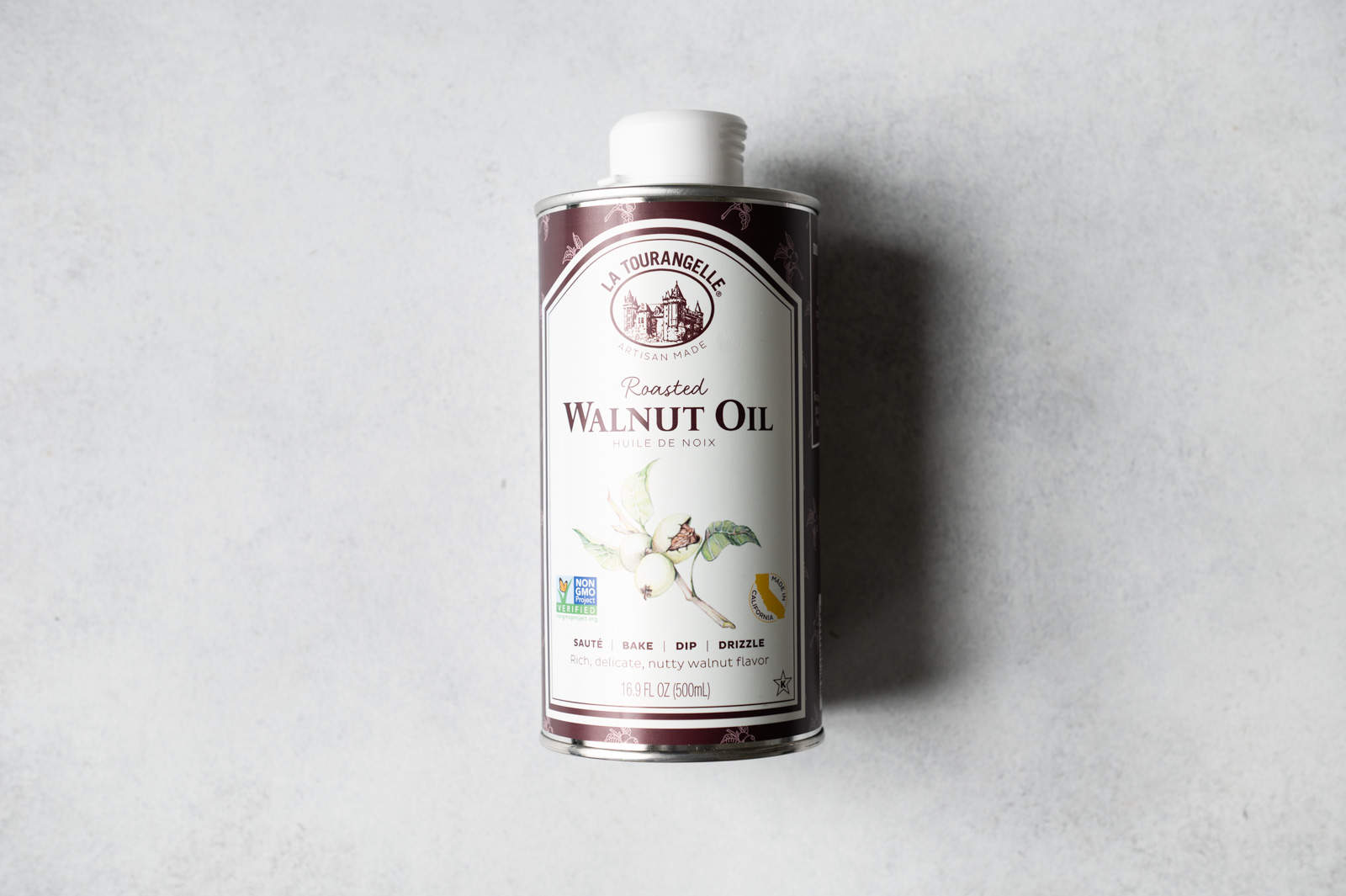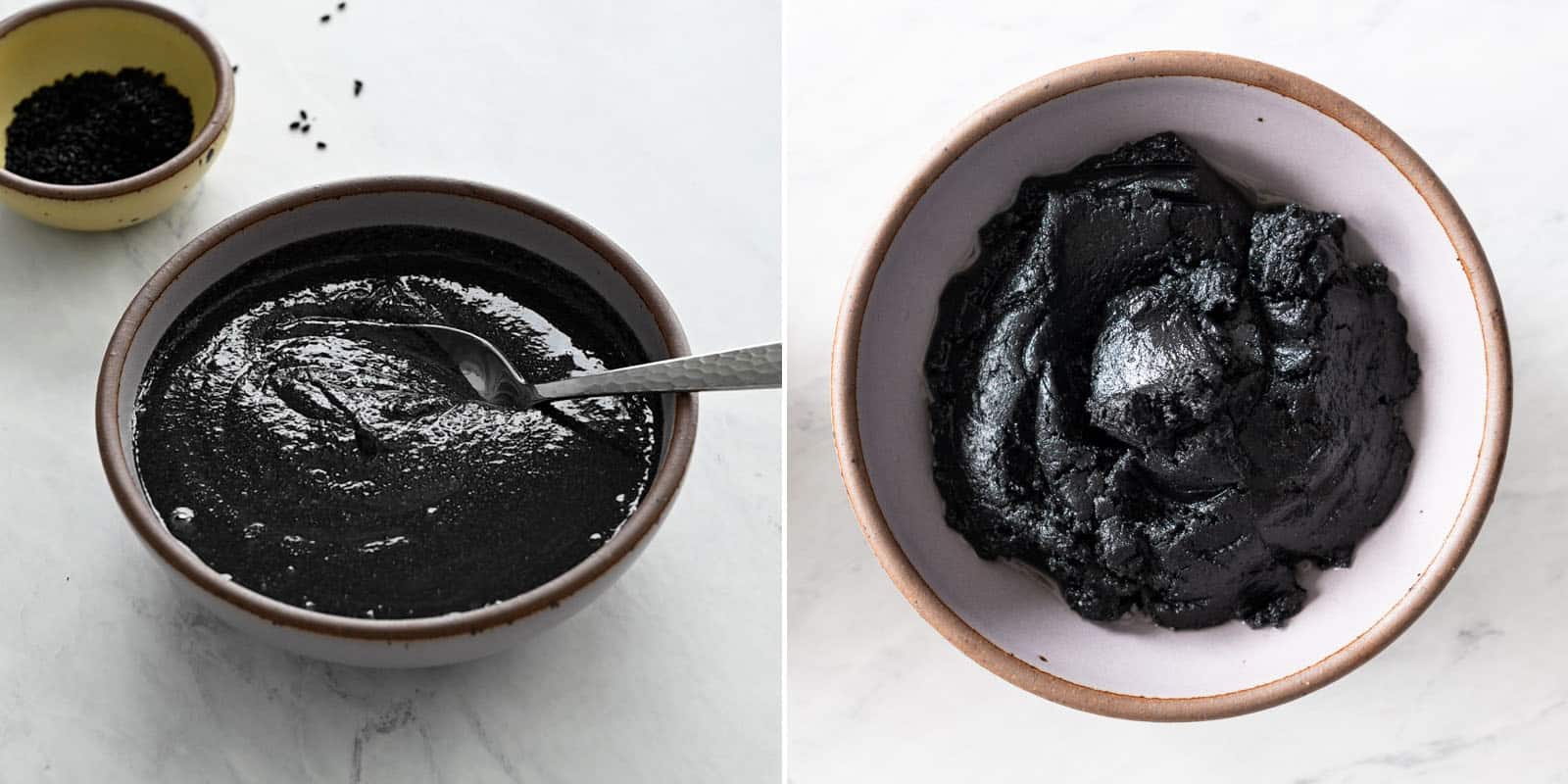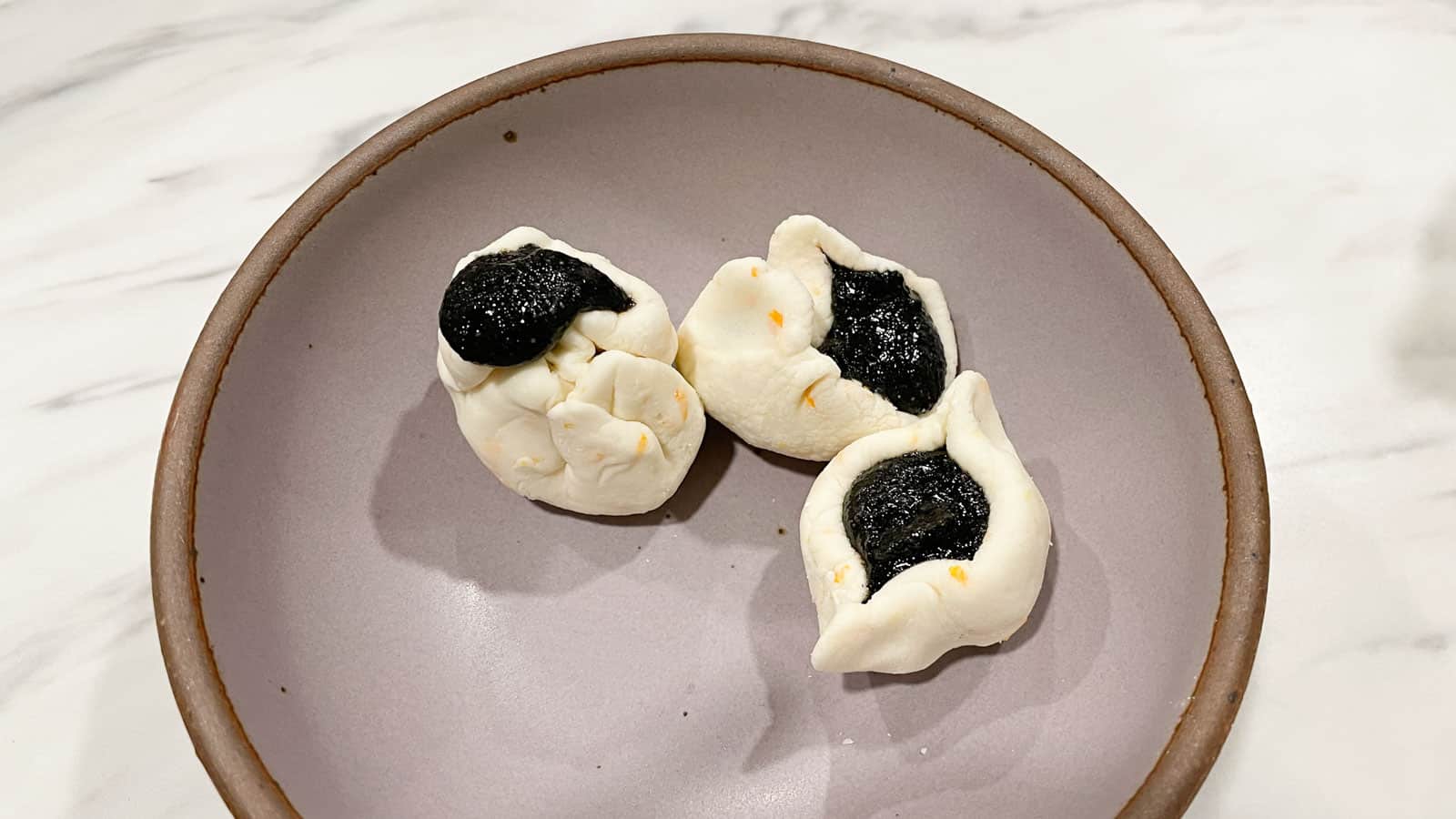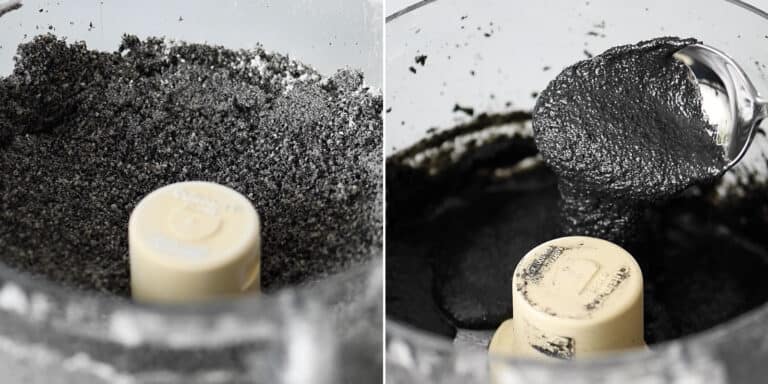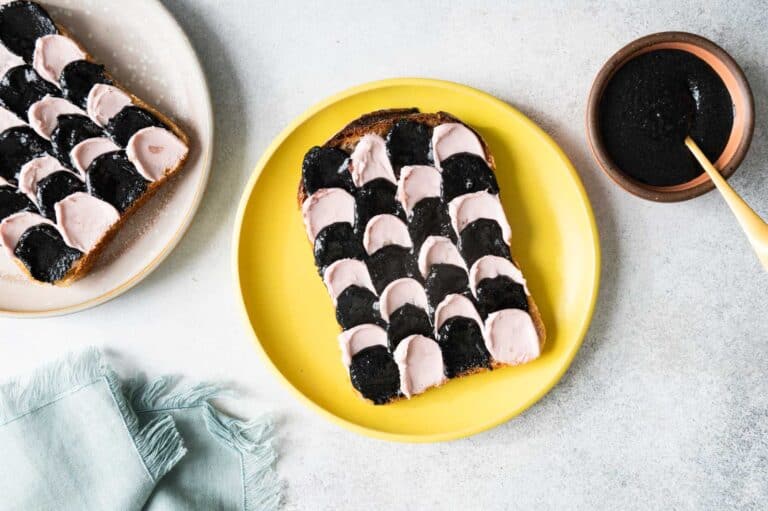Recently, I discovered Rooted Fare’s crunchy black sesame butter, which is an all-purpose spread. Although I haven’t tried that product yet, I liked their idea of making black sesame paste easily accessible for foods besides desserts. Inspired by Rooted Fare’s black sesame butter, I set out to make a paste that could be enjoyed on its own or incorporated into other recipes. After testing many batches, I’ve finally nailed down a black sesame paste recipe. The paste has a lovely nutty aroma, just the right amount of sweetness, and subtle bitter notes. I absolutely love eating the black sesame paste on toast with strawberry cream cheese. Let me know how you like to enjoy this paste!
COOKING NOTES FOR BLACK SESAME PASTE
INGREDIENTS
Black Sesame Seeds Walnut Oil I wanted the black sesame paste to be slightly runny and easily spreadable, so I added La Tourangelle’s roasted walnut oil to the paste. This is one of my favorite nut oils because it gives a dish a beautiful nutty aroma without being too overpowering. If you have a nut allergy, you can use virgin coconut oil or a neutral oil (such as canola oil) instead. This recipe uses a considerable amount of oil (5 tablespoons), so I don’t recommend using toasted sesame oil as a substitution. Toasted sesame oil has a very strong aroma, and adding 5 tablespoons of the oil to this paste will overpower all the other ingredients. Powdered Sugar Black sesame seeds are naturally bitter, so you need to sweeten the paste with sugar. I recommend using powdered sugar for a smoother paste. Plain granulated sugar (or caster sugar) gives the paste a gritty texture. I have seen several other black sesame paste recipes that use honey to sweeten the paste. I tested a batch with sesame seeds and honey and I did not like the texture. The resulting paste is very firm–it’s so stiff that you can pinch it with your fingers. I probably could have added more honey, but I didn’t want the paste to be too sweet. Adding oil didn’t help either, as the oil simply separated from the rest of the paste (see photo above, right). Vanilla & Salt I added vanilla to give the paste a different layer of fragrant aroma. Although this recipe doesn’t use much salt, the hints of salt that you can taste will contrast nicely with the sweetness of the paste.
USING A FOOD PROCESSOR
In order to transform the sesame seeds into a paste, you’ll need to blend them in a food processor for about 3.5 to 4 minutes. I recommend using a food processor that has a good motor, like this Cuisinart 7-cup food processor (affiliate link). If you halve the recipe, you’ll want to use a smaller food processor (see below for a further explanation).
WHAT CAN I USE BLACK SESAME PASTE FOR?
It’s fantastic as a spread on toast. I love pairing the black sesame paste with strawberry cream cheese. You can also use it as a filling for bread rolls (like cinnamon rolls). I will also be sharing a cookie recipe soon that incorporates some of the paste into the cookie dough. Unfortunately, this paste is a little too runny for making tang yuan because of the amount of added walnut oil. I struggled to wrap the paste inside the glutinous rice dough even after I froze the paste (see photo above). Typically, I add butter to the black sesame paste for tang yuan. Butter turns solid once it’s chilled, so the black sesame paste is easier to shape and wrap inside a dough.
HOW LONG DOES THE PASTE KEEP?
Store the paste inside a jar and refrigerate for 2 to 3 weeks. You can also freeze this paste for 5 to 6 months.
CAN YOU HALVE THE RECIPE?
Yes, but with a very important caveat–you need to use a small food processor (like a 3 to 4 cup capacity). When you try to grind a small amount of ingredients in a larger food processor, you’ll find that the blades can’t touch the ingredients. Instead, the blades simply graze over the ingredients without actually breaking them down.
